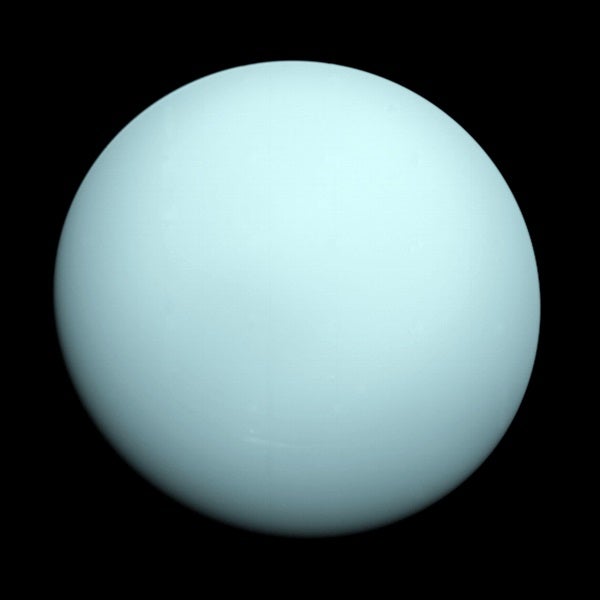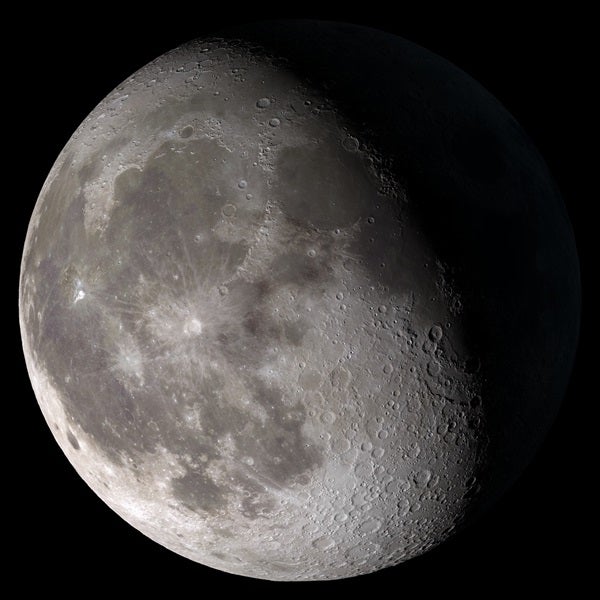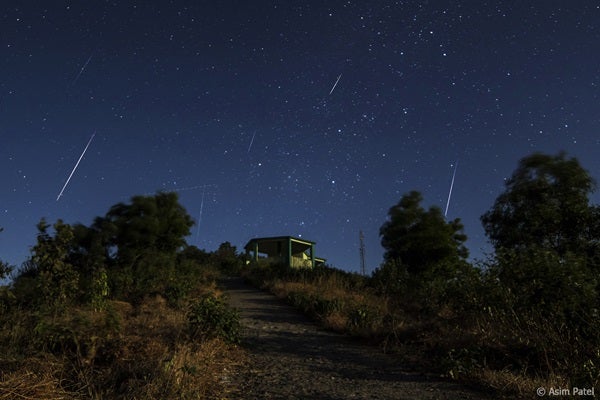Friday, October 14
Saturn remains a gorgeous sight in the evening sky all week. It stands about 15° high in the southwest an hour after sunset and doesn’t set until 9 p.m. local daylight time. The ringed world shines at magnitude 0.5 among the background stars of southwestern Ophiuchus. When viewed through a telescope, Saturn shows a 16″-diameter disk surrounded by a dramatic ring system that spans 35″ and tilts 26° to our line of sight.
Saturday, October 15
Full Moon officially arrives at 12:23 a.m. EDT tomorrow morning (9:23 p.m. PDT this evening). You can find it rising in the east around sunset and peaking in the south just before 1 a.m. local daylight time. It dips low in the west by the time morning twilight starts to paint the sky. The Moon lies in southern Pisces near that constellation’s border with Cetus. October’s Full Moon also goes by the name “Hunter’s Moon.” In early autumn, the Full Moon rises about half an hour later each night compared with a normal lag close to 50 minutes. The added early evening illumination supposedly helps hunters track down their prey.
Uranus reaches opposition and peak visibility today. Opposition officially arrives at 7 a.m. EDT, when the outer planet lies opposite the Sun in our sky. This means it rises at sunset, climbs highest in the south around 1 a.m. local daylight time, and sets at sunrise. The magnitude 5.7 planet lies in southern Pisces some 2.6° northwest of magnitude 4.8 Mu (m) Piscium. Although Uranus normally shines brightly enough to glimpse with the naked eye under a dark sky, you won’t see it tonight because the Full Moon lies just 3° to its south. Use binoculars to locate the planet or, better yet, wait until the bright Moon isn’t so close. A telescope reveals Uranus’ blue-green disk, which spans 3.7″.
Sunday, October 16
The variable star Algol in Perseus reaches minimum brightness around 9:49 p.m. EDT, when it shines at magnitude 3.4. If you start tracking it this evening, you can watch it more than triple in brightness (to magnitude 2.1) by dawn. This eclipsing binary star runs through a cycle from minimum to maximum and back every 2.87 days. Algol remains visible all night, passing nearly overhead around 2:30 a.m. local daylight time.
The Moon reaches perigee, the closest point in its orbit around Earth, at 7:34 p.m. EDT. It then lies 222,364 miles (357,861 kilometers) away from us.
Monday, October 17
Brilliant Venus stands out low in the southwest during evening twilight. The planet lies about 10° above the horizon a half-hour after sunset and sets as twilight comes to a close. At magnitude –3.9, Venus is the brightest object in the evening sky after the Moon. Although you’ll be hard-pressed to see any background stars against the twilight, the inner world officially passes from the constellation Libra into Scorpius today.
Tuesday, October 18
Be sure to keep an eye on the Moon tonight. The waning gibbous rises around 8:30 p.m. local daylight time in the company of the Hyades star cluster in Taurus. Observers in eastern North America can see Luna pass in front of 4th-magnitude Theta1 (q1) and 3rd-magnitude Theta2 (q2) Tauri. Watch the two stars reappear from behind the Moon’s dark limb around 11 p.m. EDT. The main event, however, starts more than two hours later. Observers south of a line that runs from Southern California to the western Great Lakes can then watch as 1st-magnitude Aldebaran dips behind the bright limb of our satellite.
Wednesday, October 19
Mars continues to put on a nice show these October evenings. The magnitude 0.2 Red Planet lies among the background stars of Sagittarius and appears some 20° high in the south-southwest after darkness falls. A telescope shows the planet’s 8″-diameter disk, which should show a few subtle dark markings during moments of good seeing. While you look at Mars this evening, it should have a new visitor from Earth sitting on its surface. The European Space Agency’s ExoMars Schiaparelli module is scheduled to touch down on martian soil shortly before 11 a.m. EDT. Although largely a test to demonstrate the technology needed for future missions, Schiaparelli will capture 15 black-and-white images on its way to the surface.
Thursday, October 20
Jupiter appears in the morning sky this week. It rises as morning twilight begins and climbs nearly 10° high in the east 45 minutes before sunrise. You won’t mistake the giant planet for any other object — at magnitude –1.7, it’s brighter than any other morning object besides the Moon. Jupiter will climb higher in the next few weeks and become a tempting target for those with telescopes.
Friday, October 21
Although the Orionid meteor shower peaks this morning, a waning gibbous Moon shares the sky and will drown out many of the fainter “shooting stars.” Still, observers can expect to see half a dozen or so meteors per hour before morning twilight commences. Orionid meteors appear to radiate from the northern part of the constellation Orion the Hunter.
Saturday, October 22
Last Quarter Moon occurs at 3:14 p.m. EDT. By the time it rises shortly after midnight local daylight time in North America, its phase will have waned to approximately 45 percent lit. Earth’s satellite appears against the background stars of Cancer the Crab, approximately 4° south-southwest of the Beehive star cluster (M44).
Sunday, October 23
Look high in the east after darkness falls this week, and you should see autumn’s most conspicuous star group. The Great Square of Pegasus stands out in the evening sky at this time of year, though it appears balanced on one corner and looks more diamond-shaped. These four almost equally bright stars form the body of Pegasus the Winged Horse. The fainter stars that form the rest of this constellation’s shape trail off to the square’s west.












